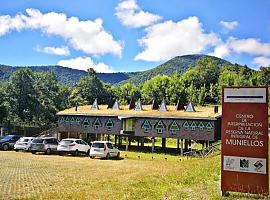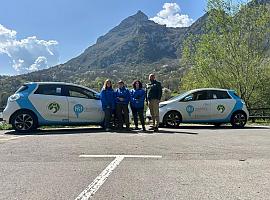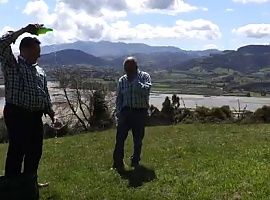CHIEF CABINET SECRETARY EDANO: I have one item to report. Regarding the instances in which former employees of the Minister of Economy, Technology and Industry (METI) have been re-employed at Tokyo Electric Power Company (TEPCO) after leaving their posts, in addition to inspecting these matters after the current nuclear issue is resolved, the Government believes that there is a need to fundamentally rethink the personnel management and training systems in place within the organizations that manage nuclear power. I have consulted Minister for Economy, Trade and Industry Banri Kaieda about this, and he has instructed those working within the Nuclear and Industrial Safety Agency (NISA), the Agency for Natural Resources and Energy (ANRE) and other such bodies, as well as high-ranking officials in METI, to refrain from taking employment at power companies until this matter has been resolved, in order to avoid rousing any suspicion among the people. We are planning to spread the word on this order for restraint and will seek the cooperation of power companies as well. For further details, please pose your questions to personnel divisions of the Minister's Secretariat of METI.
Q&As
REPORTER: Yesterday, TEPCO announced a roadmap for when it thinks the nuclear incident will be resolved. Do you think this roadmap is feasible? What is your particular opinion of it?
CHIEF CABINET SECRETARY EDANO: The roadmap was created via consultations among the experts in TEPCO and those in relevant organizations, so I think it must be feasible. That said, there are still aftershocks occurring from time to time even now, and we have seen many points in the past recently in which the situation has unfortunately deteriorated due to the lack of an environment which allowed for systematic responses. Through NISA and the Nuclear Safety Commission (NSC), the Government should maintain a constant sense of urgency and work to improve the situation along with the roadmap. To do this, I believe we should continue to check to make sure that we both fully understand the situation and are moving forward with steps toward a conclusion to this matter in line with the roadmap.
REPORTER: After receiving the roadmap, Minister Kaieda stated that lifting the evacuation order around the station during Step 1 would be difficult to follow through with. What is your understanding of this point, and hypothetically, what do you think about lifting the evacuation order during Step 2?
CHIEF CABINET SECRETARY EDANO: I have received a report that it would be rather difficult to proceed with lifting the order during Step 1. As for doing so after entering Step 2, for one thing, that depends on the amount of radiation present in each area. Another thing is, although entering Step 2 will mean that the situation is under control to an extent, and certainly more so than now, we will still need to consider the degree to which we feel there is a risk that the situation might deteriorate. We will conduct a variety of discussions and investigations at the end of Step 1 and thoroughly follow through with Step 2. I think that this is the quickest way to ensure the possibility - or rather, set a goal - for residents of the region to return to their homes.
REPORTER: Does this mean that you acknowledge that the evacuation will continue for another six to nine months?
CHIEF CABINET SECRETARY EDANO: The conditions of each area under evacuation or planned to be put under evacuation are different, and so naturally there will be those that can be reentered earlier and those that are in a comparatively favorable state, for which the evacuation order may be lifted within the time period you mentioned. As I said earlier, there are many different situations. The six to ninth month roadmap is based on the belief that the measures we are currently undertaking will go smoothly. Its premise is that nothing will happen to prevent this. I am extremely sorry to ask everyone to live under such difficult conditions for such a long time, but I am afraid this is the prospect. The other side of this is that while proceeding with our plans over the coming months and days, although we have set a basic roadmap, I would like to continue to work hard and see if there is room to push forward the dates that have been set forward.
REPORTER: Following the announcement of the roadmap yesterday, some residents were left wondering if they would be able to return to their homes or not. Do you have anything to say on this right now?
CHIEF CABINET SECRETARY EDANO: That depends on the radiation levels in each region or the kind and amount of accumulated radiation in the soil in each area. In particular, we still haven't investigated the areas closest to the power station at all, and so I unfortunately cannot say anything as to the general situation right now. However, if I were to venture a guess, I don't think that we will face a situation in which none of the evacuated areas can be returned to. If we can bring the issue at the power station to a conclusion, then I think that we will be able to bring many areas to a point where people can return to them, although how long this takes is another story. For this purpose, we must prevent the further deterioration of the problem and work as quickly as possible to reduce the amount of radiation being emitted, which has declined relatively compared to the past. Even if we do not meet the set deadlines, we are currently working to restore the area to a point where those wishing to return home may. This is the current situation.
REPORTER: Can I take this to mean that the statement about the region being uninhabitable for 10 or 20 years, which was a comment made by Special Advisor to the Cabinet Kenichi Matsumoto, is unrealistic?
CHIEF CABINET SECRETARY EDANO: At the least, the current situation is not one which allows us to make an exact judgment about that. Until we inspect the area, particularly those places where it is thought there is a high level of radiation in the soil, we cannot offer any forecasts. The situation at the power station has a large impact on this. Until we resolve that situation, even if we inspect the soil, there is the high chance that areas still receiving higher doses of radiation will continue to accumulate more radiation than those places which are not as exposed to the substances coming from the power station. Thus the current situation is one in which I hope to resolve the situation at the power station, investigate the area and offer a forecast after that.
REPORTER: Regarding the area within 20km from the nuclear power stations, you expressed that it is difficult to forecast how things will proceed. What is your outlook in the case that the roadmap for the area within 20km goes according to schedule?
CHIEF CABINET SECRETARY EDANO: For the area within 20km?
REPORTER: Yes.
CHIEF CABINET SECRETARY EDANO: Regarding the area within 20km of the power station, we must plan for the time when things come to a conclusion, that is to say, around six to nine months from now, when Step 2 has been completed. Once we are at that point, we must first investigate such factors as the soil. We hope to start on this as soon as possible. Based on such findings, we will be able to make a forecast.
REPORTER: On a related matter, I believe that the building of temporary housing is drastically behind schedule. Only 36 units had been completed as of last week and 10,000 are still in the beginning stages of being built. I asked you yesterday about where the evacuees should go in the future. My question today is, how do you plan to speed up the delayed process for building temporary housing units, and what do you plan to do to compensate for the delay?
CHIEF CABINET SECRETARY EDANO: We do need to speed up the construction of temporary housing. There are three factors that need to be in place in order to make this possible, which are: the procurement of materials, securing the locations on which the buildings will be constructed, and gathering human resources for this. With regard to the securing of materials, the Government has been asking for a great deal of cooperation from relevant companies. We must put further efforts in areas such as finding appropriate lots, which we need to do by linking up with local governments. We are making dedicated efforts toward this end. Furthermore, I have ordered the Headquarters for Special Measures to Assist the Lives of Disaster Victims to report on such circumstances and give an as detailed and specific report as possible. Please inquire with them for further details on the progress of this issue.
REPORTER: Listening to you talk, it sounds to me as if you are unable to deny completely that the land and housing very close to the nuclear power stations will be uninhabitable for the next 10 to 20 years, as was said by Special Advisor Matsumoto. What is the Government's stance on this? Is the Government completely neutral? Does it not really know at all? Or does it believe it is possible that this area might in fact become uninhabitable for a long time?
CHIEF CABINET SECRETARY EDANO: Our stance is neutral.
REPORTER: I would like to ask about plans to flood the reactors with water, as is written under Step 1 of the roadmap. You already talked about the possibility of doing this in your press conference on the day after the earthquake. You gave an explanation about flooding the power stations with water as a way to cool them, saying that "to flood the surrounding containment vessels will take around 10 days." TEPCO brought up this idea for the first time in the schedule for Step 1. Doesn't this suggest that there have been some flaws in TEPCO's response plan up until now?
CHIEF CABINET SECRETARY EDANO: What I spoke of soon after the earthquake was what we would need to do in order to inject water into the power station and cool the reactors if we faced a situation in which damage to the interior of the pressure vessel led to a leak and made it impossible cool the reactor easily. At that point - and this I believe still remains true regarding Units 1 and 3 - I remember explaining that we were almost 100% sure that no major damage had been caused to the containment vessels, and even if there were damages to the pressure vessels and water was leaking, it was believed that the fuel rods could still be covered with water by flooding the entire pressure vessel with water. As such, I did not explain that the entire containment vessel would definitely be flooded with water, but presented this as an option of a possible way to fully immerse the fuel rods in water. I have since then been told by experts that flooding the reactors with water is one of the ideas being considered as a way to fully cool the fuel rods, although I have not received any specific reports about this. The issue was reported alongside information about the future outlook for the situation.
REPORTER: On the subject of re-employment, which you mentioned at the beginning of the press conference, what will be done regarding Mr. Ishida, the former Director-General of the ANRE, who is currently employed at TEPCO? Also, you previously spoke in the Cabinet Committee about the possibility of proposing an amendment of the law to the Diet. Under future fundamental reviews, will the tightening of regulations through such revisions to the law be subject to review?
CHIEF CABINET SECRETARY EDANO: As I have just explained, while I think that fundamental reviews are necessary, in light of the various issues that we are currently faced in relation to the situation at the nuclear power station, when considering the amount of energy to devote to that, our first thought was for what we could do administratively. We, therefore, ordered employees to refrain from taking employment at power companies, and I consulted with Minister Kaieda on seeking the cooperation of relevant power companies. However, it is not possible to impose direct orders on already retired civil servants who are currently employed as advisors to TEPCO. Naturally, in view of the Government's handling of the situation, I hope that the individuals concerned will respond responsibly and appropriately using their own judgment.
REPORTER: Yesterday, you visited Fukushima and exchanged opinions with the heads of the local governments there and the leaders of other areas subject to planned evacuation. The day before that, Deputy Chief Cabinet Secretary Tetsuro Fukuyama also visited the area. Such consecutive visits by senior government officials seem unusual. To what extent do you feel you were successful in gaining the understanding of the local governments, and what is the outlook on the actual timing of any policy to be issued?
CHIEF CABINET SECRETARY EDANO: With regard to the timing issue, we are currently working out various details, and considering how we can respond to the various requests that were put to Deputy Chief Cabinet Secretary Fukuyama the other day. As for gaining the understanding of local residents, I am very sorry and regretful that the mayors have had to struggle to deal with two serious issues; that is to say, ensuring the safety of residents, and ensuring a normal way of life. At the same time, from the perspective of ensuring safety, we will exert even greater efforts to seek and receive their understanding, and work even harder to fulfill the requests of local residents to the greatest extent possible, without compromising their safety.




















